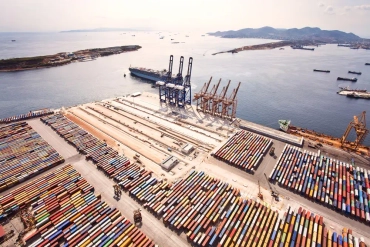
Port Miami: Big Ship Ready



Introduction: Port Miami
Located strategically at the crossroads of the Americas, it’s no wonder that Port Miami is one of the US’ busiest ports. Given its location, many shippers use it as a transfer point for the transshipment of Asian ocean freight goods en route to South America.
Of all the southeastern US ports, the Port of Miami has the deepest shipping channels. It’s also the only port that’s able to handle neo-Panamax vessels. Plus, it is well-connected to the hinterlands with the Florida East Coast Railway’s on-dock intermodal rail service. The 351-mile freight rail system allows cargo docking at Port Miami to reach over two-thirds of the US market in as little as four days.
Port strengths aside, Port Miami is, above all, recognized as the Cruise Capital of the World and Global Gateway.
Latest news
Port Miami is widely known for its cruise capabilities and reputation. For some two decades now, it has held the position of the number one cruise/passenger port in the world. It is able to accommodate the largest cruise ships, which is why major cruise lines such as Carnival, Royal Caribbean, and Norwegian Cruise Lines all have operations there. In 2016, Porthole Cruise Magazine named it Best US Port for customer service, quality operations, and all round excellence.
“PortMiami continues to work hard to maintain its global standing as the Cruise Capital of the World.”
– Juan M. Kuryla, Port Director, PortMiami
Late last October, the state of Florida granted $33 million for port developments over the next five years. This is largely thanks to another record-breaking year for both cargo and cruise passengers for the port.
Mainly, it registered a 14% increase in containerized cargo to 1.03m TEUs. Plus a world record breaking number of 4.98 million cruise passengers sailed through Port Miami.
Quick facts and figures
Given its location between North America and South America, it should come as no surprise that the Latin America and the Caribbean areas form the greatest contributions to the port’s movements. Here’s a breakdown of the shipping traffic passing through the port in 2015. [Image credit: Port Miami]
![]()
In 2015, Port Miami handled 1,007,782 TEUs, registering a 15% jump from the previous year. Total tonnage also grew to some 8.6 million – a 12% increase from 2014
![]()
Container port
A part of the $33 million in state funds granted will go to acquiring three super-post-Panamax cranes and upgrading cargo terminal yards. All this – as part of its ongoing efforts to improve operational efficiencies.
Following over $1 billion worth of infrastructure projects, the port is now able to handle post-Panamax vessels. This allows it to accommodate the megaships transiting through the newly expanded Panama Canal. Already, the port is equipped with super post-Panamax gantry cranes. These make it possible to service cargo vessels up to 22 containers wide, 9 containers above deck and 11 below.
Besides being the closest US container port to the Panama Canal, it’s also one of the few US ports that are “big-ship ready”. Given its quick adaptation to the Panama Canal expansion, one can expect to see continued growth at Port Miami.
“We are proud of our long-standing partnership with PortMiami and are certain that the synergies achieved through the Deep Dredge and the Panama Canal expansion projects will boost international trade and contribute to future economic growth by increasing job opportunities and revenues at both PortMiami and the Panama Canal.”
– Jorge L. Quijano, CEO of Panama Canal Authority
Cruise port
Container port aside, Port Miami’s cruise partners are also developing plans to expand their businesses there. Over four million cruise passengers – and counting – pass through the port annually. Already, its cruise facilities are one of the best in the world. Nearly 20 cruise lines operate at the port, which has over 42 ship berths. That said, Port Miami needs to maintain its status of the world’s top cruise port by improving its services. And it is.
Currently, it is undergoing a $200m expansion by Royal Caribbean Cruises involving a new cruise terminal. Additionally, Virgin Voyages has plans to bring one of their three new ships to the port. This is in preparation for its seven-day Caribbean vacations scheduled to begin in 2020.
Related Articles


